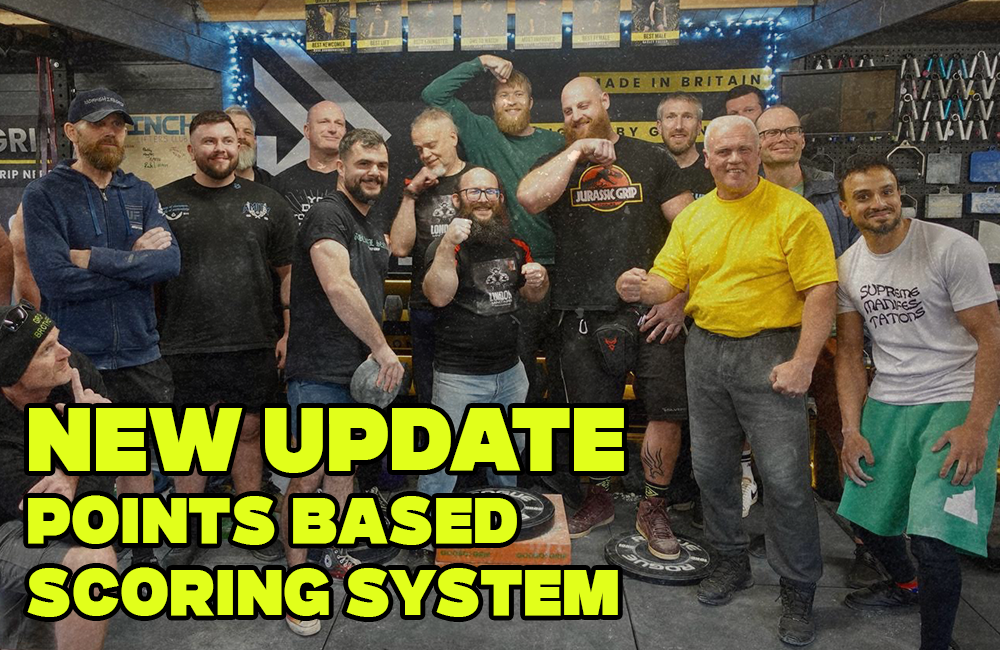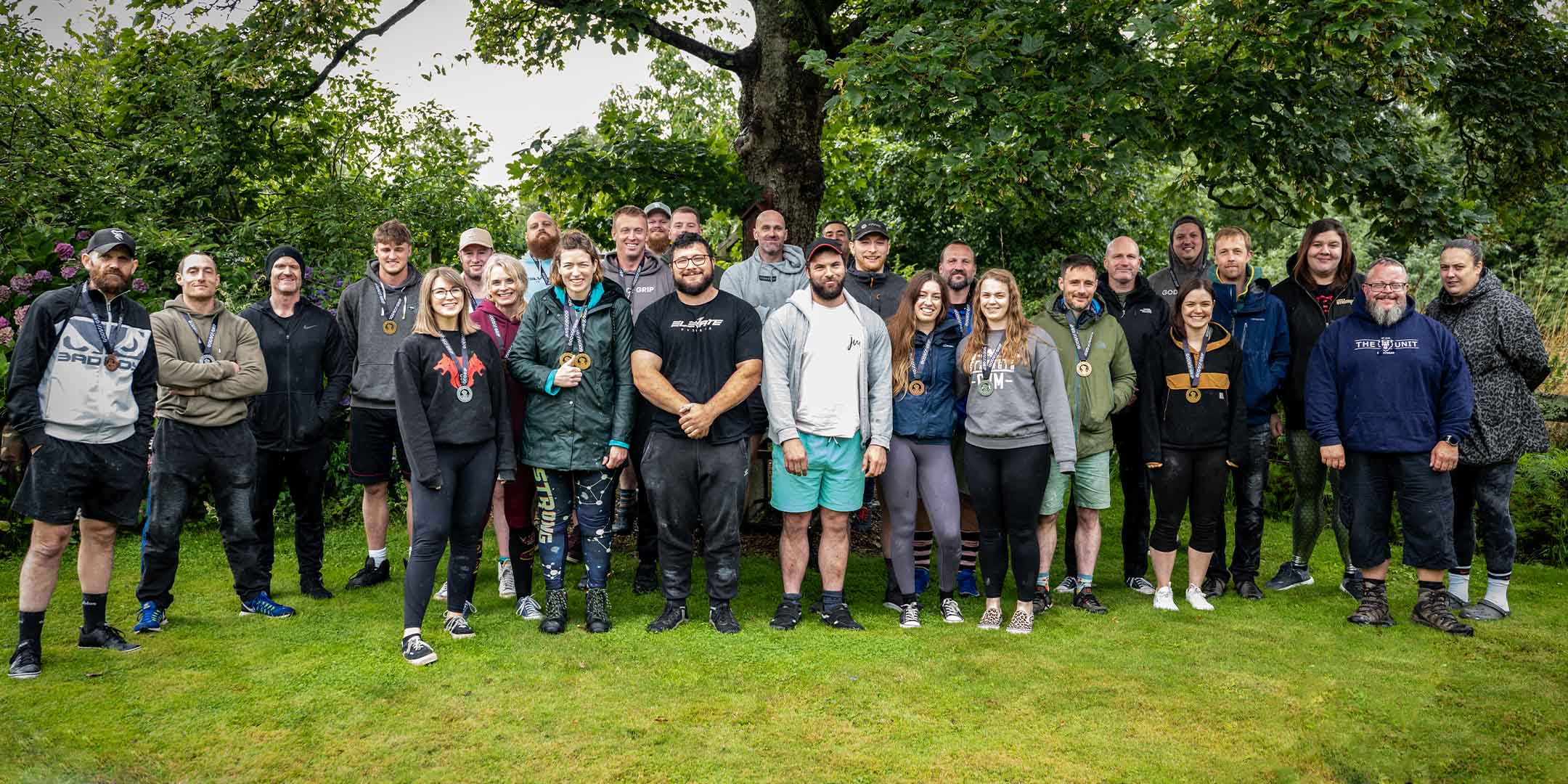Vertical bars are one of the purest tests of open-hand support strength. Diameter and shape change how much the thumb, fingers, and crucially, the wrist have to work. This guide compares the classic cylinders (50–89 mm) plus useful variants like Square, Cone, Reverse Cone, Traffic Cone, and the World of Grip Handshake, so you can pick the right tool and progress with confidence.
Quick Picks
- New to V-bars / want PRs: Standard 50 mm
- Next step / more wrist demand: Mega 60 mm
- Advanced wrist focus: Ultra 76 mm
- Max open-hand challenge: Omega 89 mm
- Great for holds & variety: Square Style
- LBH / anvil carryover: Cone, Reverse Cone, Traffic Cone
- Heavy open-hand without going to 89 mm: World of Grip Handshake
- See everything: Vertical Bar Grip Tools Collection
Why Vertical Bars?
- Open-hand strength: Pure support grip—no knurl to hide behind.
- Carryover: Helps axle pulls, farmer’s holds, stones, and odd objects.
- Clear progression: Diameter steps (50 → 60 → 76 → 89 mm) give a built-in roadmap.
Cylindrical Lineup
50 mm — Standard Vertical Bar
The classic “dynamite stick.” The most hand-friendly diameter, ideal for heavy singles, fast progress, and building confidence. If you only buy one, make it this.
- Best for: All-round training, chasing PRs
- Expectation: Your highest numbers versus thicker bars
- Product: Standard 50 mm
Coach cue: Set the bar deep in the hand, keep the wrist neutral, and lift smoothly, no jerking.
60 mm — Mega Vertical Bar
A clear step toward open-palm. You’ll feel more wrist demand, but it’s still accessible for most hands.
- Best for: Progressing from 50 mm, adding wrist stability
- Expectation: Noticeable drop from 50 mm; great “next step”
- Product: Mega 60 mm
Coach cue: Squeeze the forearm tight and “pin the wrist” as the plate breaks the floor.
76 mm — Ultra Vertical Bar
Where things get spicy. Harder to “wrap,” so wrist integrity is stressed—in a good way.
- Best for: Advanced lifters, wrist-centric training blocks
- Expectation: Big drop from 50 mm; brilliant for timed holds
- Product: Ultra 76 mm
Coach cue: Keep the elbow close; any drift multiplies torque on the wrist.
89 mm — Omega Vertical Bar
True wide open-hand benchmark. Surprisingly liftable once you find the sweet spot, but very wrist-taxing.
- Best for: Benchmarking open-hand capacity; humbling fun
- Expectation: Lowest numbers, highest wrist demand
- Product: Omega 89 mm
Coach cue: Commit to the pull, no spin, stand tall and pause before a controlled descent.
Shape Variants
Square Style Vertical Bar
Looks mean; feels kinder than expected. Rounded edges let it sit into a hand crease, making it awesome for timed holds and volume blocks.
- Best for: Density work; variation without wrecking recovery
- Expect: Often “easier” than it looks; stable feel
- Product: Square Style Vertical Bar
Cone Style Vertical Bar
Tapers from thick to thin, great Little Big Horn / anvil-style carryover without the cost of a cast anvil. Slick at first, then seasons with chalk.
- Best for: Pinch-meets-support feel; LBH practice
- Use: Heavy singles or 10–20 s holds
- Product: Cone Style Vertical Bar
Reverse Cone Vertical Bar
Flips the taper so the thickest section is at the top, forcing the thumb and fingers to bite differently. Slightly nastier on open-hand power—great if you already own a cone.
- Best for: Advanced lifters wanting a harsher open-hand angle
- Product: Reverse Cone Vertical Bar
Traffic Cone Vertical Bar
Same working geometry as the cone with the iconic cone aesthetic—a fun statement piece that still trains.
- Best for: Clubs/gyms that want a conversation starter with real value
- Product: Traffic Cone Vertical Bar
World of Grip Handshake
Wide hand spacing but not as extreme as 89 mm, so loads tend to be higher than Omega while still smashing open-hand strength. The “handshake” contact lets you lock the fingers more naturally.
- Best for: Heavy open-hand training without going to 89 mm; big carryover to odd-object lifting
- Product: World of Grip Handshake
Which Size/Shape Should You Choose?
Start here: If you’re new or chasing PRs, the Standard 50 mm is the best all-rounder.
Progression: Move to 60 mm for more wrist demand, then 76 mm and 89 mm as your open-hand capacity grows.
Variety / block focus: Add Square Style for holds/volume, Cone / Reverse Cone for LBH carryover, and Handshake if you want heavy open-hand training without the 89 mm feel.
Size at a glance
- 50 mm: PR machine; universal fit; fastest progress
- 60 mm: Open-palm intro; great “daily driver”
- 76 mm: Hard; wrist-heavy; superb for holds
- 89 mm: Max wrist challenge; pure benchmark
Technique & Setup Tips
- Chalk: Light dusting only, too much reduces bite and causes slippage.
- Set up: Use a rated carabiner & loading pin.
- Start position: Bar aligned with mid-foot, wrist stacked, elbow close.
- Finish: Stand tall, brief pause, controlled descent (don’t drop).















